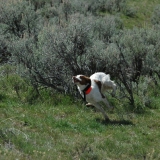- Forum
- General Discussion | Introductions | Off Topic Forum
- Photography General Discussion
- Screw on macro filters. Do they work good?
Screw on macro filters. Do they work good?
-
 Topic Author
Topic Author
- Jakov Barnes
- Lone Wolf
- Followers: 88
- Posts: 235
-
Points:
3403
Post #425922
-

- Don Fischer
- Photography Hooked
-
- Nikon D5000
- Followers: 341
- Posts: 989
-
Points:
2442
Post #425926
-

- effron
- Newbie
- Followers: 1623
-
Points:
129640
-

- Kevin W. E.
- New Kid On The Block
- Followers: 6
- Posts: 27
-
Points:
0
-

- Screamin Scott
- Moderator
-
- Nikon D610, Nikon D7100, Nikon D300, Olympus OMD E-M5 MarkII, Olympus OM-D E-M10, Olympus Pen E-P3 + film SLR's
- Followers: 1384
- Posts: 6866
-
Points:
40251
Post #425989
-
 Topic Author
Topic Author
- Jakov Barnes
- Lone Wolf
- Followers: 88
- Posts: 235
-
Points:
3403
Post #425990
-

- Screamin Scott
- Moderator
-
- Nikon D610, Nikon D7100, Nikon D300, Olympus OMD E-M5 MarkII, Olympus OM-D E-M10, Olympus Pen E-P3 + film SLR's
- Followers: 1384
- Posts: 6866
-
Points:
40251
Post #425991
-

- Kevin W. E.
- New Kid On The Block
- Followers: 6
- Posts: 27
-
Points:
0
Post #425994
Screamin Scott wrote: There are different types. Ernesto alluded to the Canon 500D... It is one of the better two element models. Nikon used to make 52mm & 62mm dual element close up lenses as well. You can only find them on the used market anymore. Canon's 500D is available in different filter sizes , unlike Nikon's... There are others out there as well like the Olympus MCON-35... The cheap ones you see sold usually as sets (+1,+2 +4 etc.) are crap. Sharp only in the center & loads of CA & distortion. Tubes are a better route, but the lesser cost ones won't relay any info from the lens & have to be used manually. The drawback with close up lenses & tubes is that you lose infinity focus & you are restricted to a certain magnification unless you add or subtract tubes/filters... Raynox makes one of the better close up macro units, but it too suffers the same as the tubes/filters. A dedicated macro lens will allow for adjustable magnification & yet still retain infinity focus. Shorter focal lengths like 50-60 are good for static subjects. 90-105mm are best overall as they allow you to have a bit more distance between you & your subject. 150-200mm allow even more distance but are more unwieldy & expensive. I could fill several more pages on macro options (it's my niche, I own 6 different macro lenses from 55 to 180mm) as I have tried (and own)them all
Infinity focus is a nonfactor when shooting macro. We can talk about light diffraction also when adding more glass to the front of your lens. The tech stuff could be debated until someone yells uncle. The idea is getting a good, usable image, and I would refer anyone to tubes before the magnification glass. Yes, with tubes you will have to learn how to shoot in manual and you will have to learn good focus, I would also suggest a focusing rail to make the process less painful. They sell Chinese made rails on eBay for 25.00 USD. The payoff of learning how to use your camera like this is priceless. On the other hand, if your just looking for an easy way to get to macro and really have no desire to learn about your camera, then by all means use the magnification glass, it's cheap and painless.
-

- Screamin Scott
- Moderator
-
- Nikon D610, Nikon D7100, Nikon D300, Olympus OMD E-M5 MarkII, Olympus OM-D E-M10, Olympus Pen E-P3 + film SLR's
- Followers: 1384
- Posts: 6866
-
Points:
40251
Post #425996
-

- Screamin Scott
- Moderator
-
- Nikon D610, Nikon D7100, Nikon D300, Olympus OMD E-M5 MarkII, Olympus OM-D E-M10, Olympus Pen E-P3 + film SLR's
- Followers: 1384
- Posts: 6866
-
Points:
40251
Post #425997
Kevin W. E. wrote:
Screamin Scott wrote: There are different types. Ernesto alluded to the Canon 500D... It is one of the better two element models. Nikon used to make 52mm & 62mm dual element close up lenses as well. You can only find them on the used market anymore. Canon's 500D is available in different filter sizes , unlike Nikon's... There are others out there as well like the Olympus MCON-35... The cheap ones you see sold usually as sets (+1,+2 +4 etc.) are crap. Sharp only in the center & loads of CA & distortion. Tubes are a better route, but the lesser cost ones won't relay any info from the lens & have to be used manually. The drawback with close up lenses & tubes is that you lose infinity focus & you are restricted to a certain magnification unless you add or subtract tubes/filters... Raynox makes one of the better close up macro units, but it too suffers the same as the tubes/filters. A dedicated macro lens will allow for adjustable magnification & yet still retain infinity focus. Shorter focal lengths like 50-60 are good for static subjects. 90-105mm are best overall as they allow you to have a bit more distance between you & your subject. 150-200mm allow even more distance but are more unwieldy & expensive. I could fill several more pages on macro options (it's my niche, I own 6 different macro lenses from 55 to 180mm) as I have tried (and own)them all
Infinity focus is a nonfactor when shooting macro. We can talk about light diffraction also when adding more glass to the front of your lens. The tech stuff could be debated until someone yells uncle. The idea is getting a good, usable image, and I would refer anyone to tubes before the magnification glass. Yes, with tubes you will have to learn how to shoot in manual and you will have to learn good focus, I would also suggest a focusing rail to make the process less painful. They sell Chinese made rails on eBay for 25.00 USD. The payoff of learning how to use your camera like this is priceless.
So, if you see a Fox or another animal past the reach of focus of the lens with the tube on it, how do you propose to capture it's image ?.... By the time you remove the tube, the opportunity may well be gone. With a true macro lens that retains infinity focus, this isn't a problem... While I have & use a focus rail, I only do so when stacking images. Most all of my macro is done hand held using either a ring light or softbox attached to a speedlight.. The short duration of the flash stops any motion, be it my own or my subjects & the additional light allows me to stop down my lens for added DOF (which is pitifully little when shooting macro). I also shoot macro entirely in manual, camera, lens & flash... I have used tubes to increase the magnification of my macro lenses, but standard lenses are not flat field designs & thus I don't use them as the IQ falls off towards the edges...That's not to say that one shouldn't use tubes on standard lenses, it's just that best results are gotten with dedicated gear. Diffraction is tied to aperture, not glass surfaces...See the attached link...
www.cambridgeincolour.com/tutorials/diffraction-photography.htm
-

- Moe
- Apprentice
-
- Canon 5D Mark III
- Followers: 251
- Posts: 2147
-
Points:
11899
-

- effron
- Newbie
- Followers: 1623
-
Points:
129640
Post #426040
Why so serious?
-

- Kevin W. E.
- New Kid On The Block
- Followers: 6
- Posts: 27
-
Points:
0
Post #426057
Screamin Scott wrote:
Kevin W. E. wrote:
Screamin Scott wrote: There are different types. Ernesto alluded to the Canon 500D... It is one of the better two element models. Nikon used to make 52mm & 62mm dual element close up lenses as well. You can only find them on the used market anymore. Canon's 500D is available in different filter sizes , unlike Nikon's... There are others out there as well like the Olympus MCON-35... The cheap ones you see sold usually as sets (+1,+2 +4 etc.) are crap. Sharp only in the center & loads of CA & distortion. Tubes are a better route, but the lesser cost ones won't relay any info from the lens & have to be used manually. The drawback with close up lenses & tubes is that you lose infinity focus & you are restricted to a certain magnification unless you add or subtract tubes/filters... Raynox makes one of the better close up macro units, but it too suffers the same as the tubes/filters. A dedicated macro lens will allow for adjustable magnification & yet still retain infinity focus. Shorter focal lengths like 50-60 are good for static subjects. 90-105mm are best overall as they allow you to have a bit more distance between you & your subject. 150-200mm allow even more distance but are more unwieldy & expensive. I could fill several more pages on macro options (it's my niche, I own 6 different macro lenses from 55 to 180mm) as I have tried (and own)them all
Infinity focus is a nonfactor when shooting macro. We can talk about light diffraction also when adding more glass to the front of your lens. The tech stuff could be debated until someone yells uncle. The idea is getting a good, usable image, and I would refer anyone to tubes before the magnification glass. Yes, with tubes you will have to learn how to shoot in manual and you will have to learn good focus, I would also suggest a focusing rail to make the process less painful. They sell Chinese made rails on eBay for 25.00 USD. The payoff of learning how to use your camera like this is priceless.
So, if you see a Fox or another animal past the reach of focus of the lens with the tube on it, how do you propose to capture it's image ?.... By the time you remove the tube, the opportunity may well be gone. With a true macro lens that retains infinity focus, this isn't a problem... While I have & use a focus rail, I only do so when stacking images. Most all of my macro is done hand held using either a ring light or softbox attached to a speedlight.. The short duration of the flash stops any motion, be it my own or my subjects & the additional light allows me to stop down my lens for added DOF (which is pitifully little when shooting macro). I also shoot macro entirely in manual, camera, lens & flash... I have used tubes to increase the magnification of my macro lenses, but standard lenses are not flat field designs & thus I don't use them as the IQ falls off towards the edges...That's not to say that one shouldn't use tubes on standard lenses, it's just that best results are gotten with dedicated gear. Diffraction is tied to aperture, not glass surfaces...See the attached link...
www.cambridgeincolour.com/tutorials/diffraction-photography.htm
I find this statement completely off target, why in the hell would anyone be shooting macro then all of a sudden be interested in a fox? What in the hell are you talking about? You go into the field with the purpose of shooting macro not wildlife, if you want to shoot wildlife that's a topic for another thread. We are talking macro, try to stay on subject. Macro photography does not require infinity focus. I'm not here to argue, if you want to talk lens specs or compare lens specs, that's an entirely different subject, we are talking about getting a usable image. FOCUS GRASSHOPPER!
The fundamental process at work in a rainbow is refraction - the "bending" of light. Light bends - or more accurately, changes directions -- when it travels from one medium to another. This happens because light travels at different speeds in different mediums.
When you add more glass to the front of your lens, what do you think happens? It's not just an aperture causing this. A beam of light turns when it enters a glass prism. This is a simplification, but think about it this way: One side of the light wave slows down before the other, so the beam turns at the boundary between the air and the glass (some of the light actually reflects off the prism surface, but most passes through). The light turns again when it exits the prism, because one side of it speeds up before the other.In addition to bending light as a whole, a prism separates white light into its component colors. Different colors of light have different frequencies, which causes them to travel at different speeds when they move through matter.
A color that travels more slowly in glass will bend more sharply when it passes from air to glass, because the speed difference is more severe. A color that moves more quickly in glass won't slow down as much, so it will bend less sharply. In this way, the colors that make up white light are separated according to frequency when they pass through glass. If the glass bends the light twice, as in a prism, you can see the separated colors more easily. This is called dispersion.
If your going to post a link about refraction at least understand the full scope of the subject.
-

- garyrhook
- Oh Wise One
-
- Nikon D850, Nikon D750, Panasonic G7K
- Followers: 912
- Posts: 11103
-
Points:
67681
Post #426058
That said, save your money and get a Sigma 50mm Macro lens for $300, and some tubes. Or use tubes on a longer lens so you don't have to be quite so close to your subject.
In other words: use tubes. They're cheap, the Vivitars work (on Nikon) and make it easy to figure out what to do.
-

- Screamin Scott
- Moderator
-
- Nikon D610, Nikon D7100, Nikon D300, Olympus OMD E-M5 MarkII, Olympus OM-D E-M10, Olympus Pen E-P3 + film SLR's
- Followers: 1384
- Posts: 6866
-
Points:
40251
Post #426064
Plus, it still doesn't change the fact that a true macro lens has an adjustable magnification ratio. With tubes, the only way it really changes is to add or subtract tubes. In real world shooting, that can mean missed shots. Ok, another example & this one doesn't invovle infinity focus either. You are shooting an insects at life size & a much larger insect is spotted. Say like a large butterfly or Dragonfly. With tubes, you would have to change out the tubes in order to capture the entire insect. With a dedicated macro lens, it's just a matter of turning the focus ring.... That a better example for you ?
- Forum
- General Discussion | Introductions | Off Topic Forum
- Photography General Discussion
- Screw on macro filters. Do they work good?
Latest Reviews
The Olympus Pen E-P7 is an affordable micro four thirds mirrorless camera with 4K video capabilities, a 20.3MP sensor, and 121 focus points, making it a solid entry-level camera for beginners.
The Panasonic G9 II is a 25.2-megapixel micro four thirds camera with numerous features that make it punch out of its weight class, like 779 AF points, 5.8K video, and weather sealing.
The Fujifilm XT5 is a 40MP mirrorless camera capable of 6.2K video at 30p. With those specs, it’s an ideal choice for photographers needing a camera to pull double duty for imaging and video.
The Canon EOS R100 is an entry-level mirrorless camera introduced in 2023. But just because it’s an entry-level camera doesn’t mean it’s a bare-bones camera. Find out why in this review!
Forum Top Posters
-
1Scotty 9 posts
-
2Roman Omell 4 posts
-
3Razky 4 posts
-
4Pat White 3 posts
-
5CharleyL 3 posts
-
6ShutterPal 3 posts
-
7Ruby Grace 3 posts
-
8Roger Lang 3 posts
-
9Nefarious 3 posts
-
10Jim Photo 3 posts
Latest Articles
Upgrade your kit in 2024 with the best intermediate camera on the market! The question is, what camera fits the bill? We’ve got three top options for you to choose from in this buyer’s guide.
The best photography jobs right now are a mix of tried-and-true gigs like wedding photography and new jobs highlighting AI’s capabilities, travel, and videography.
The Olympus Pen E-P7 is an affordable micro four thirds mirrorless camera with 4K video capabilities, a 20.3MP sensor, and 121 focus points, making it a solid entry-level camera for beginners.
Starting a photography business is one thing; sustaining your business over a long period of time is another. Use the tips in this professional photography guide to build something with longevity!
The Panasonic G9 II is a 25.2-megapixel micro four thirds camera with numerous features that make it punch out of its weight class, like 779 AF points, 5.8K video, and weather sealing.
Cinematic photography is an interesting genre that combines photographic and videographic skills along with effective storytelling techniques. The result? Highly impactful images!
Newborn photography requires skill, the right gear, and a lot of patience. This beginner’s guide discusses critical topics that will help you be more prepared for before, during, and after the shoot.
To fill the frame means to expand the footprint of the subject in your shot. Get in close, zoom in, crop the image, or use other techniques to bring the subject to the forefront.















